Restoration work on the frescoes of the Brancacci Chapel, a Renaissance masterpiece with frescoes by Masaccio, Masolino and Filippino Lippi inside Florence’s Church of the Carmine, has been completed in Florence . The work was made possible thanks to the collaboration of several entities and institutions, including the Friends of Florence Foundation, the Jay Pritzker Foundation who supported the project, and the Fine Arts Service of the City of Florence, the Soprintendenza Archeologia Belle Arti e Paesaggio for the Metropolitan City of Florence and the provinces of Pistoia and Prato, the Institute of Cultural Heritage Sciences of the National Research Council (CNR), and the Opificio delle Pietre Dure who worked for the success of the undertaking.
The need to intervene on the paintings of the Brancacci Chapel emerged in November 2020, when a fragment of pictorial film was found to have detached from the scene with the Dispute of Simon Mago painted by Filippino Lippi in the early 1580s. This event led to a joint verification of the responsible bodies, which highlighted the need to investigate the general state of conservation of the pictorial cycle due to the presence of some detachments of the pictorial plaster and the need to act accordingly to stabilize the criticism.
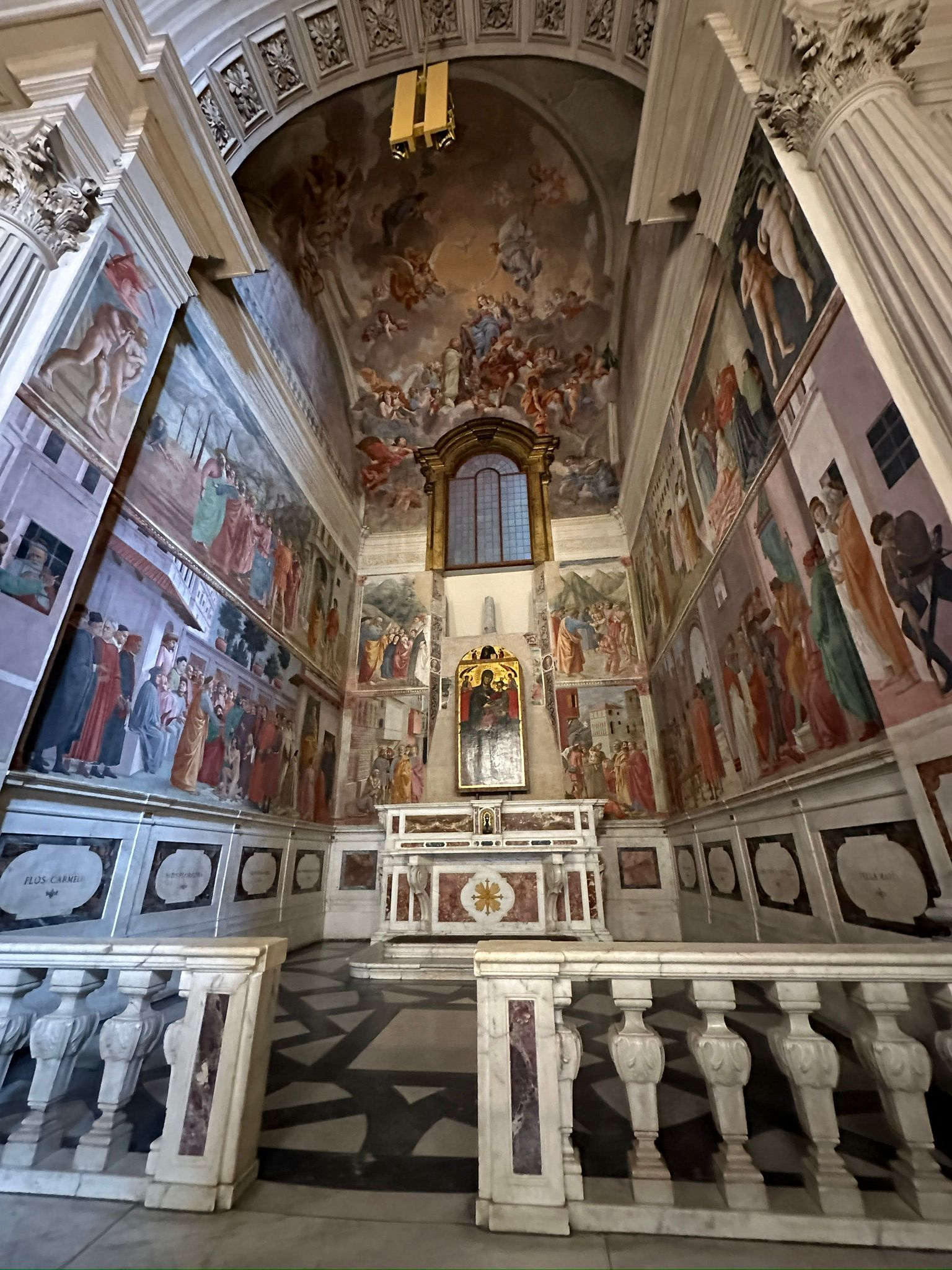
In May 2021, the entities involved signed a memorandum of understanding to coordinate all the operational steps necessary to ensure the protection of the property. The Soprintendenza took care of the analysis and monitoring operations, the Opificio delle Pietre Dure designed and carried out the restoration work, and the Municipality of Florence devoted itself to communication and heritage enhancement activities. The collaboration between the entities led to innovative results in the restoration and understanding of the Brancacci Chapel’s pictorial cycle. Thanks to the use of state-of-the-art investigative techniques, new details about the material composition of the paintings have emerged, opening new hypotheses for reconstructing the original image of the paintings. These findings could revolutionize our understanding of the work and the contribution of the authors. The results of the scientific investigations will be presented at a conference scheduled by spring 2025, where full details of the work done and the new findings will be disclosed.
The quality and prompt sharing of the strategies described allowed the City of Florence to successfully promote a campaign to find the estimated resources for the actions established by the protocol, which was quickly concluded in June 2021 with the signing of an initial agreement with Friends of Florence and Jay Pritzker Foundation, for the support of the first phase of scientific investigations and in-depth studies on the conservation status of the cycle of wall paintings, including the activities of public valorization of the results.
With this immediate willingness of intent and resources, the City of Florence entered into a specific agreement in September 2021 for the design and execution of the diagnostic and monitoring activities, with the Institute of Cultural Heritage Sciences of the National Research Council and the ABAP Superintendency of Florence, Prato and Pistoia, and started in November 2021 the construction of a complex scaffolding system, equipped with an elevator system, to set up the work floors and allow theclose inspection of the frescoes and the positioning of scientific instruments, as well as ensure continuity for public visits to the chapel, implemented in the accessibility also to users with reduced motor skills.
The outcomes of the first phase of works, concluded in June 2023, the result of the synergy between the CNR institutes (Institute of Cultural Heritage Sciences, Institute of Chemical Sciences and Technologies ’Giulio Natta’ and National Institute of Optics) of the Italian node of the E-RIHS research infrastructure, SABAP and OPD and Dip. of Chemistry ’Ugo Schiff’ of UNIFI, and private entities (Ottaviano Caruso Snc and Federica Corsini Snc), have allowed to establish the necessary actions to ensure the resolution of the critical conservation issues detected, as well as to achieve very important results in the “conservation” history of the chapel, such as: the confirmation of the effectiveness of the methodologies used in the restoration conducted in the 1980s under the direction of Umberto Baldini, the possibility of intervening on the property not with a further restoration but through a suitable plan of planned maintenance over time, the archiving of the’immense wealth of information acquired through the scientific investigation campaigns conducted and its dissemination through a prototype of a 3D web App for an interactive experience (remotely and in presence) presented at Tourisma 2022, aimed at improving accessibility and increasing the perception of authenticity and sense of belonging of the heritage, particularly of the entire monumental context (http://brancaccipov.cnr.it ).
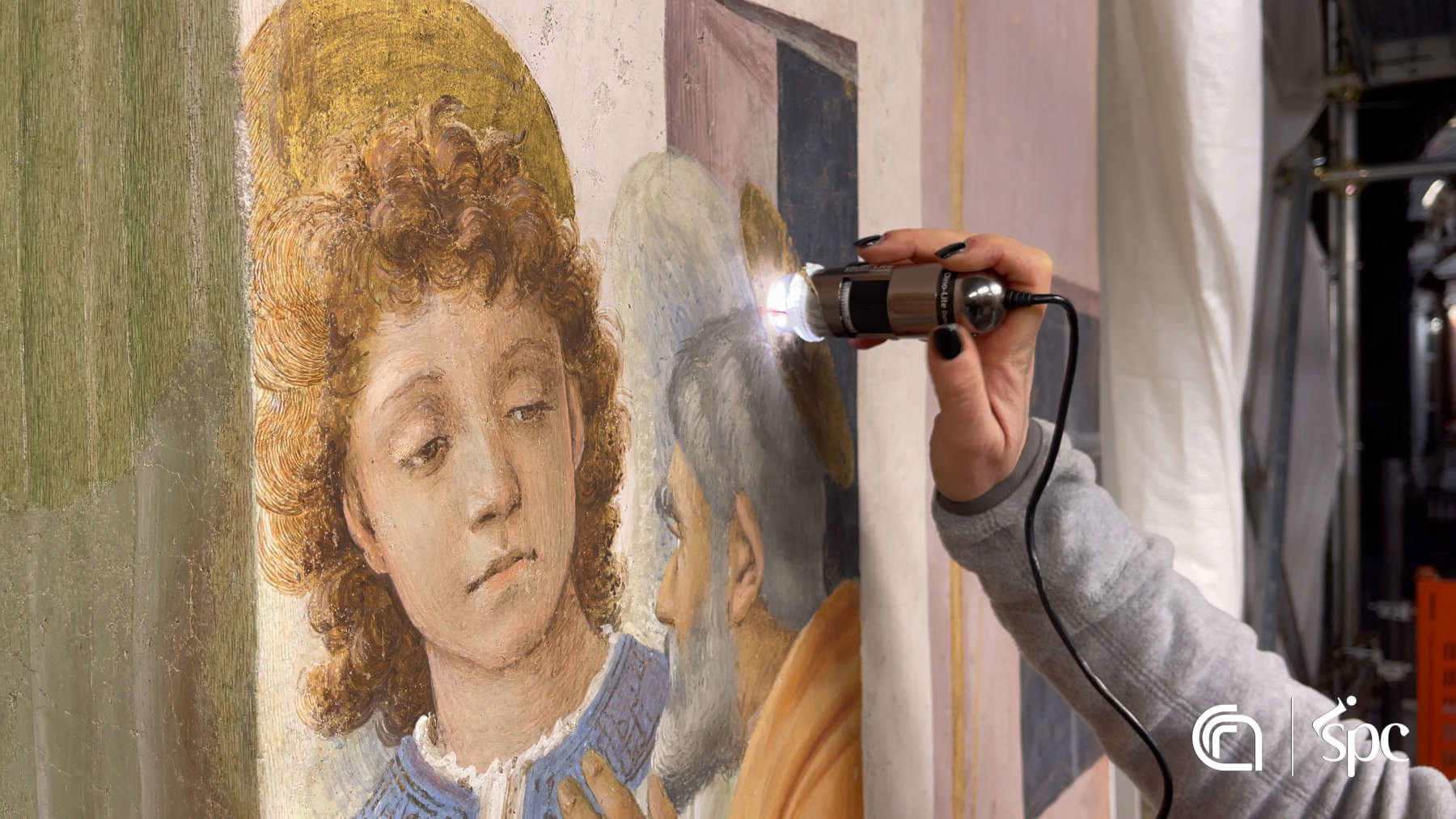
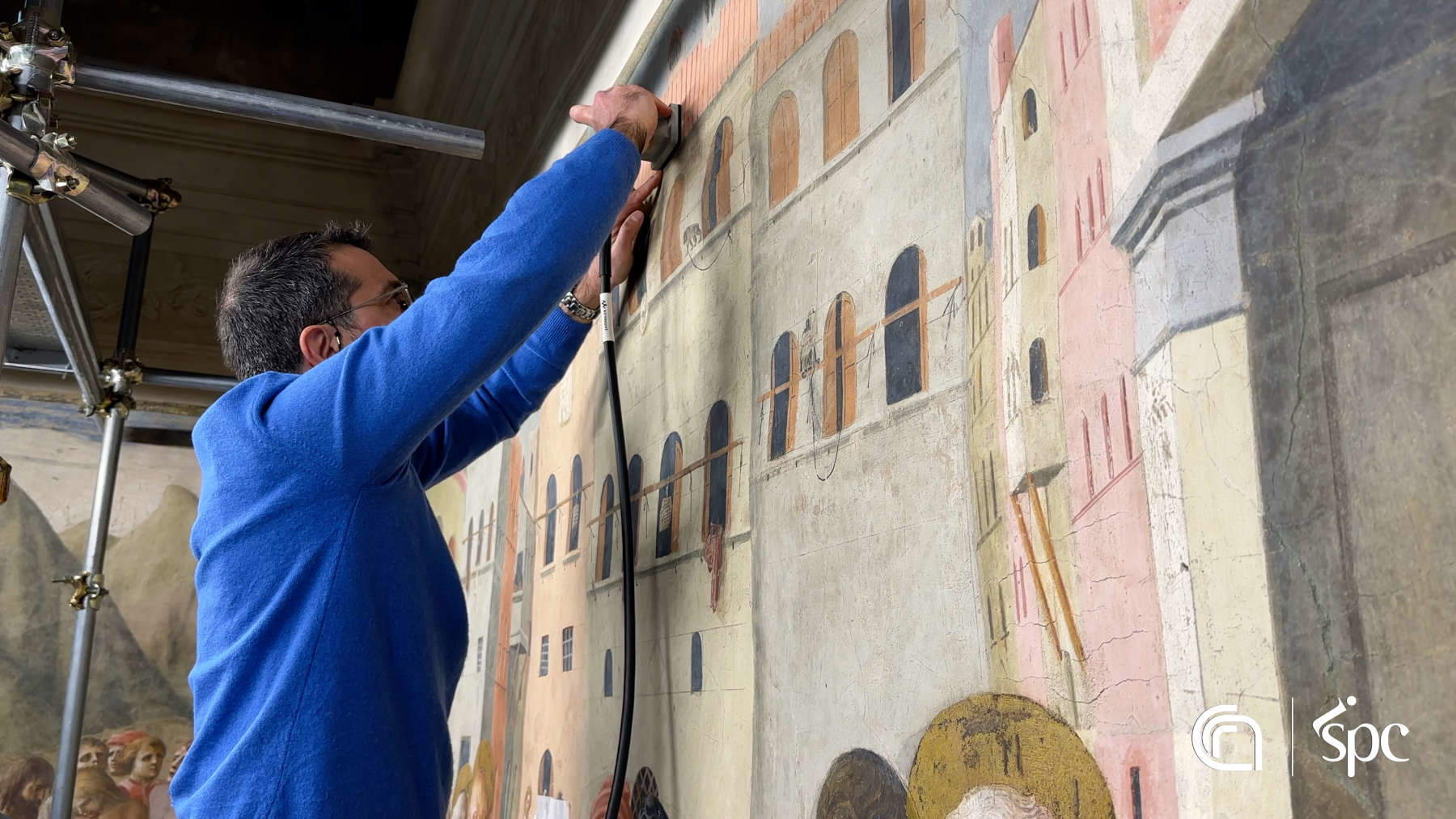
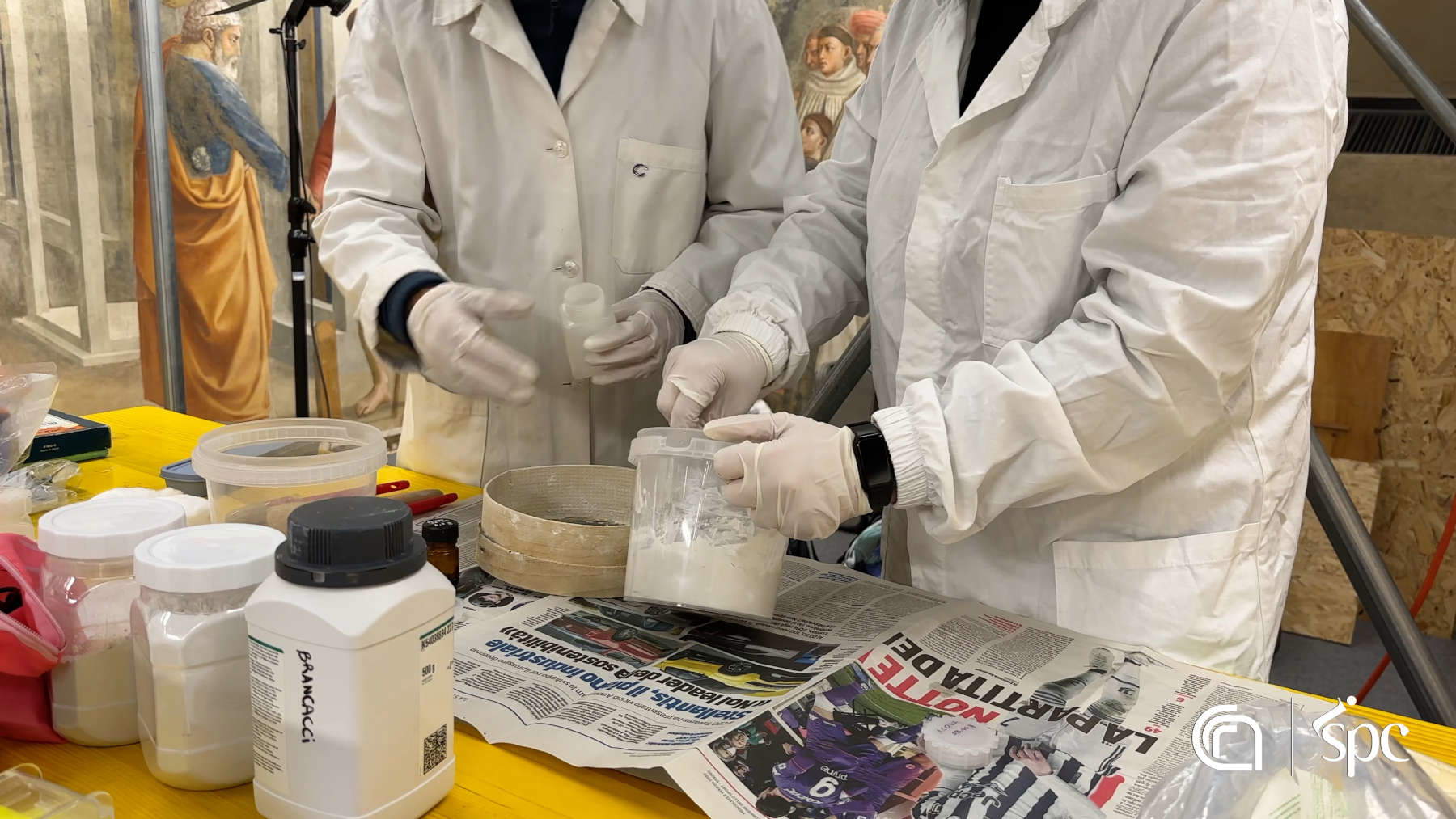
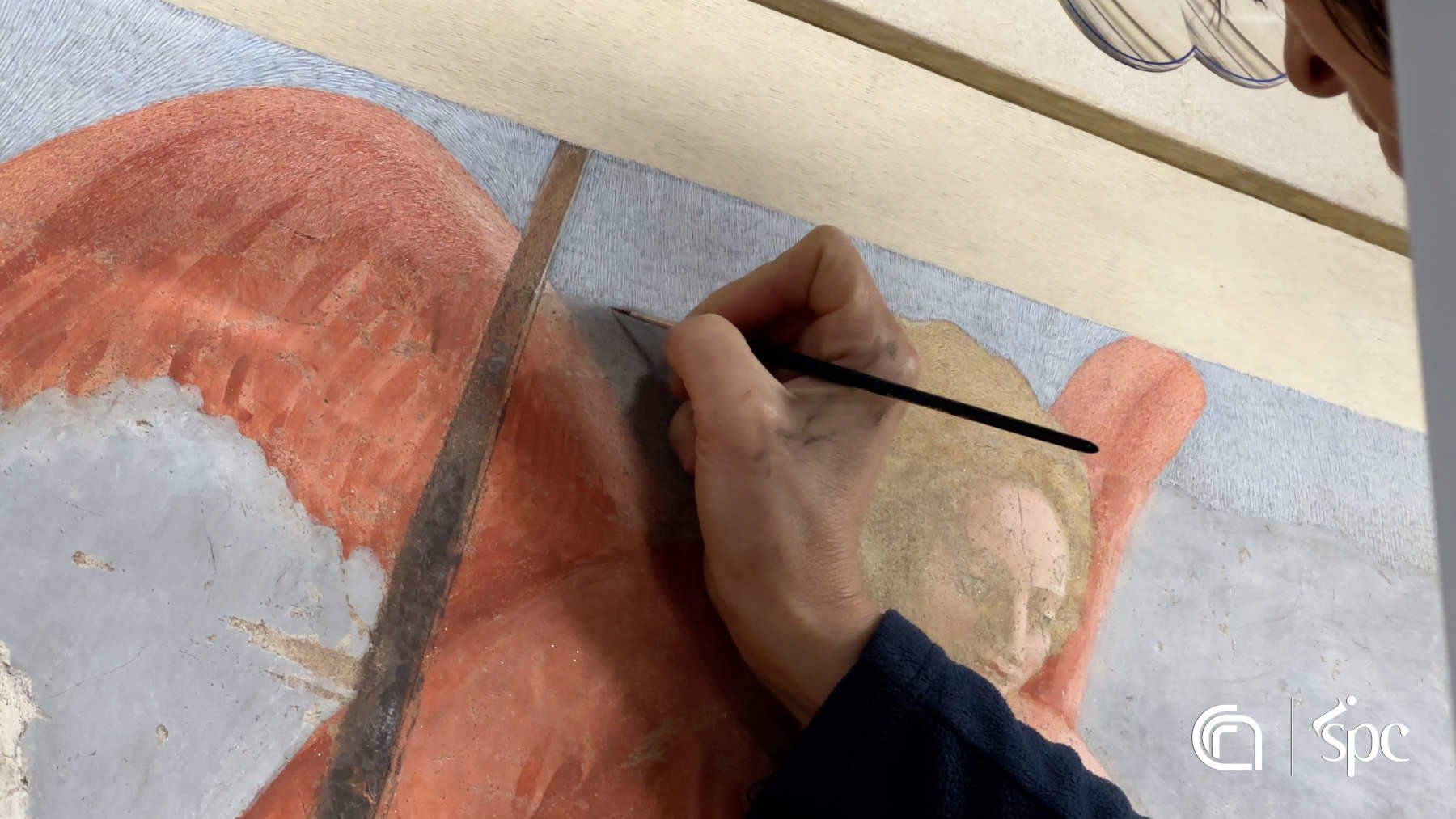
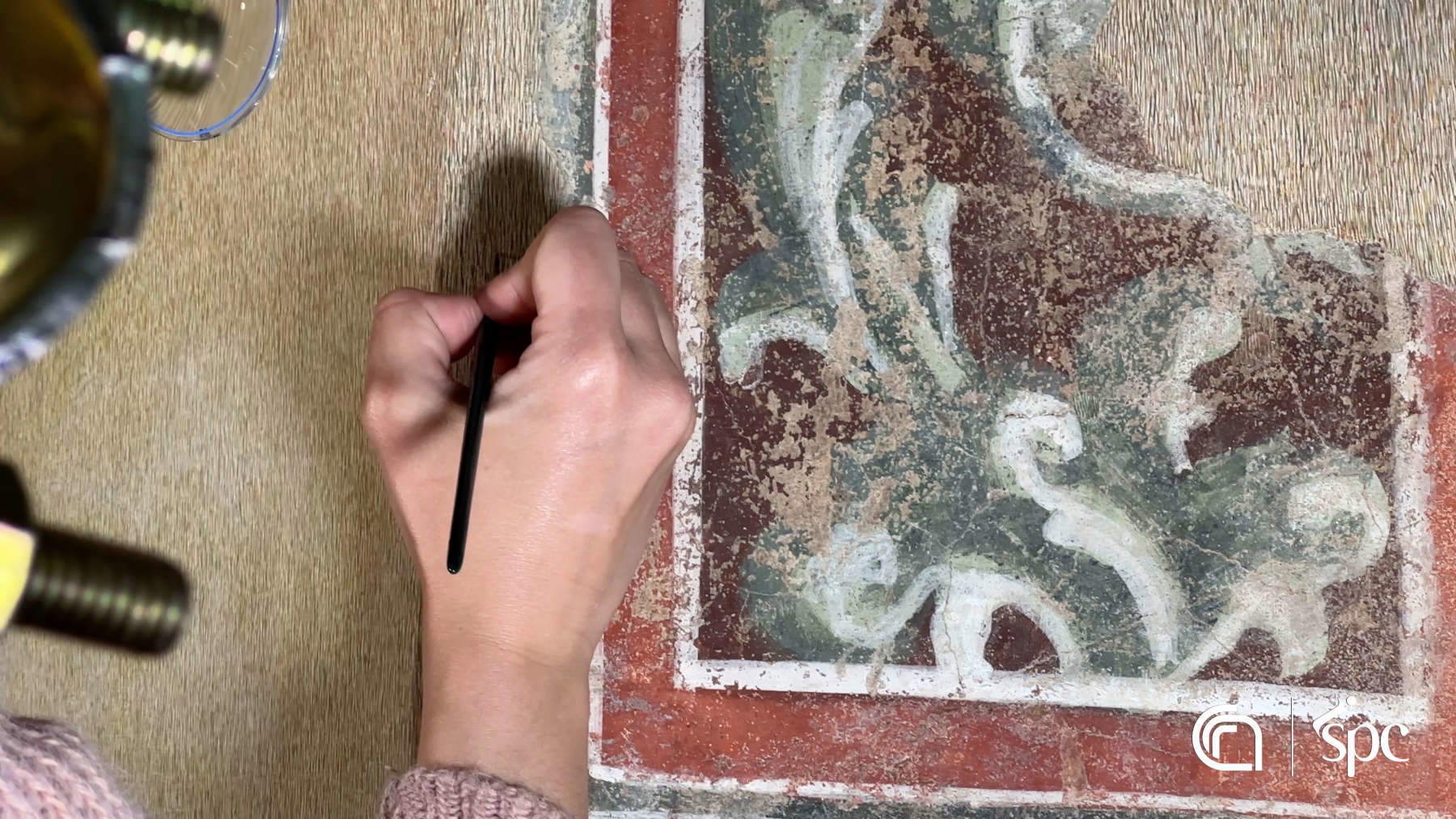
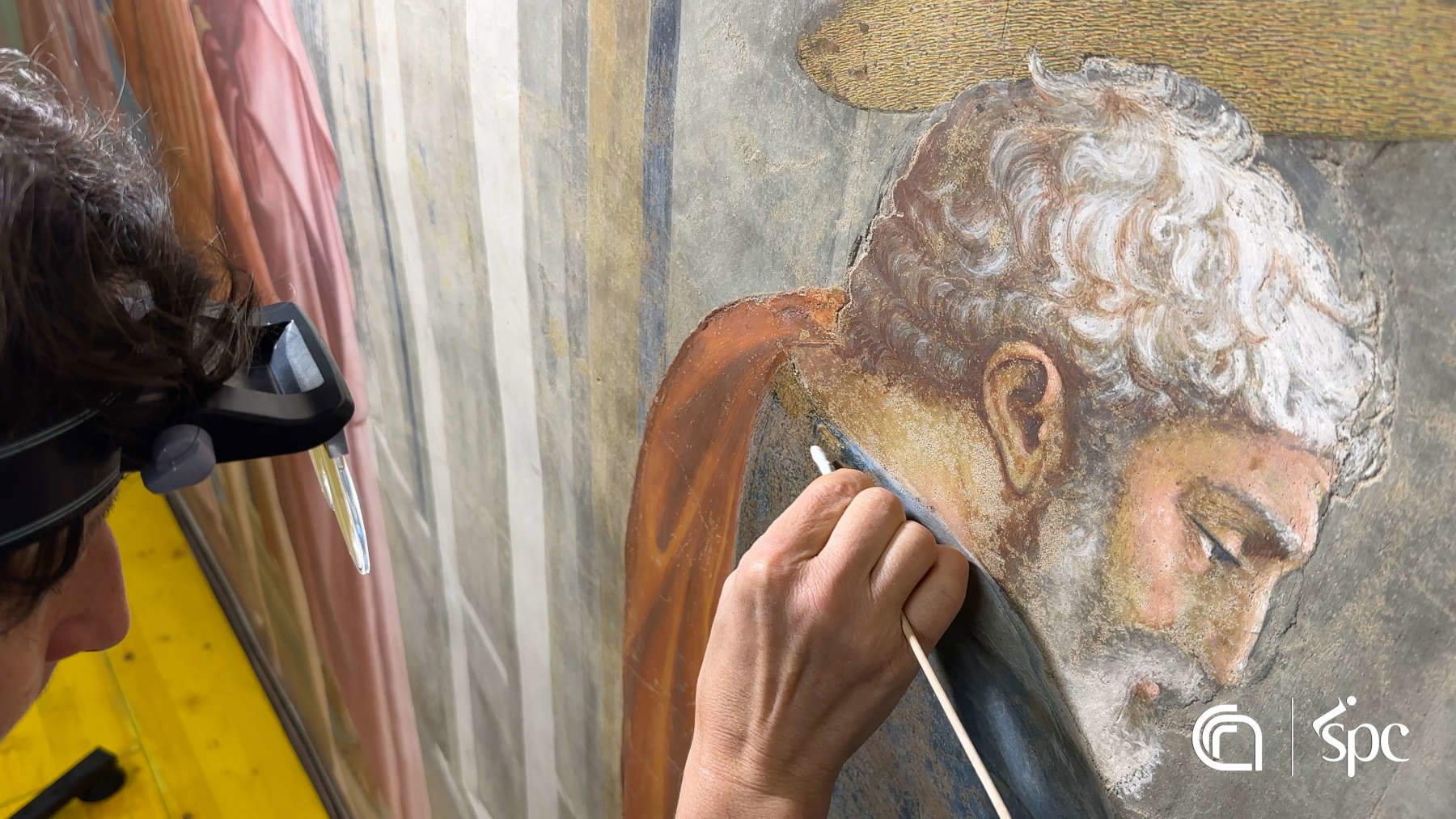
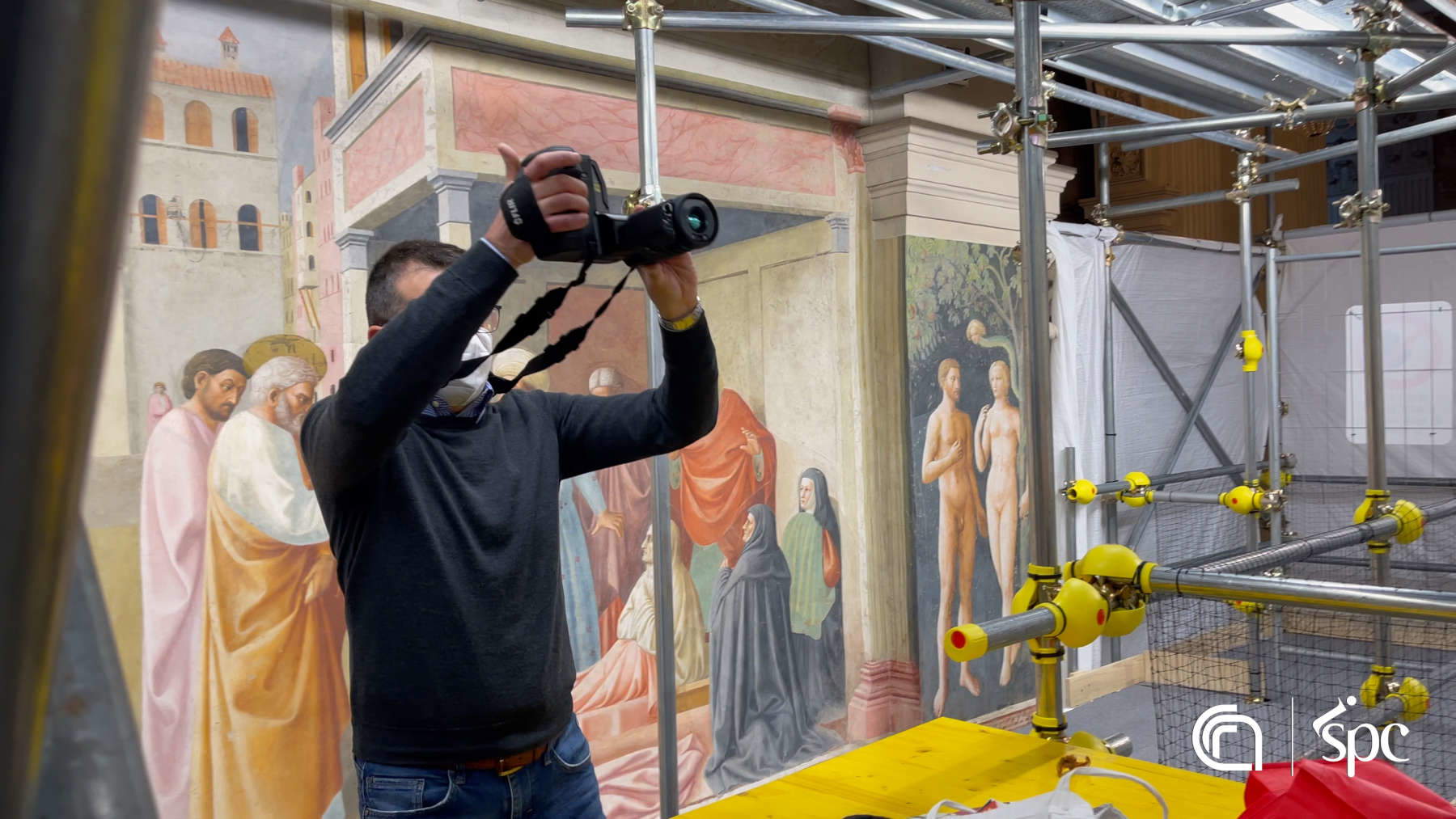
The intervention project was presented in public form in November 2022, gaining interest and consent from private patrons, Friends of Florence and the Jay Priztker Foundation, with whom the City in July 2023 was able to enter into a second agreement aimed at financially supporting the diagnostic investigations following the results that emerged, the design of the restoration interventions and the enhancement of the Brancacci Chapel in the Church of Santa Maria del Carmine consequent to the diagnostic operations.
The interventions were completed in April 2024 with the confirmation of the criteria adopted in the project, in terms of continuity with the previous conservative history. The restoration intervention was based on an in-depth work of knowledge of the work, starting from an accurate study of the surfaces that allowed to enter the design and construction moments of the cycle by Masolino, Masaccio and Filippino Lippi, and to understand the conservative conditions in order to direct and support the diagnostic investigations in all their phases. The plaster detachments detected at this stage provided an opportunity to study the behavior of autogenous-setting mortars used in the restoration of the 1980s. Developed by the faculty of Chemistry at the University of Florence, because of their strong chemical and physical compatibility with constituent materials they were an ideal candidate for new use. Test results confirmed their excellent performance, laying the groundwork for updating the formulation for new use. In fact, the ’new’ autogenous setting mortars, compliant with material safety regulations and specific for small-scale detachments, were used in March 2024 in plaster reattachment operations.
The action strategies envisioned for the transition from restoration to the planning of periodic and preventive maintenance actions have also stimulated the experimentation, on the wall surfaces, of new surface and controlled cleaning systems based on viscoelastic gels, with the aim of identifying a protocol that respects the stabilized conditions of the material and its now-historicized and still functional aesthetic appearance.
The work carried out in recent years on the Brancacci Chapel has also made it possible to define strategies for future monitoring of the integrity of the structures and dust deposition on the cleaned surfaces aimed at developing preventive conservation of the entire pictorial cycle.
The Brancacci Chapel - which during the restoration remained open at all times, by reservation, to limited groups of visitors accompanied by MUS mediators.E mediators - has finally returned to its regular public opening hours and can be visited on Mondays, Wednesdays, Thursdays, Fridays and Saturdays from 10 a.m. to 5 p.m. Sundays from 1 to 5 p.m. It observes a weekly closing day on Tuesdays. MUS.E organizes guided tours for adults and for families with children in which you can participate by calling 055 2768224 or writing to info@musefirenze.it .
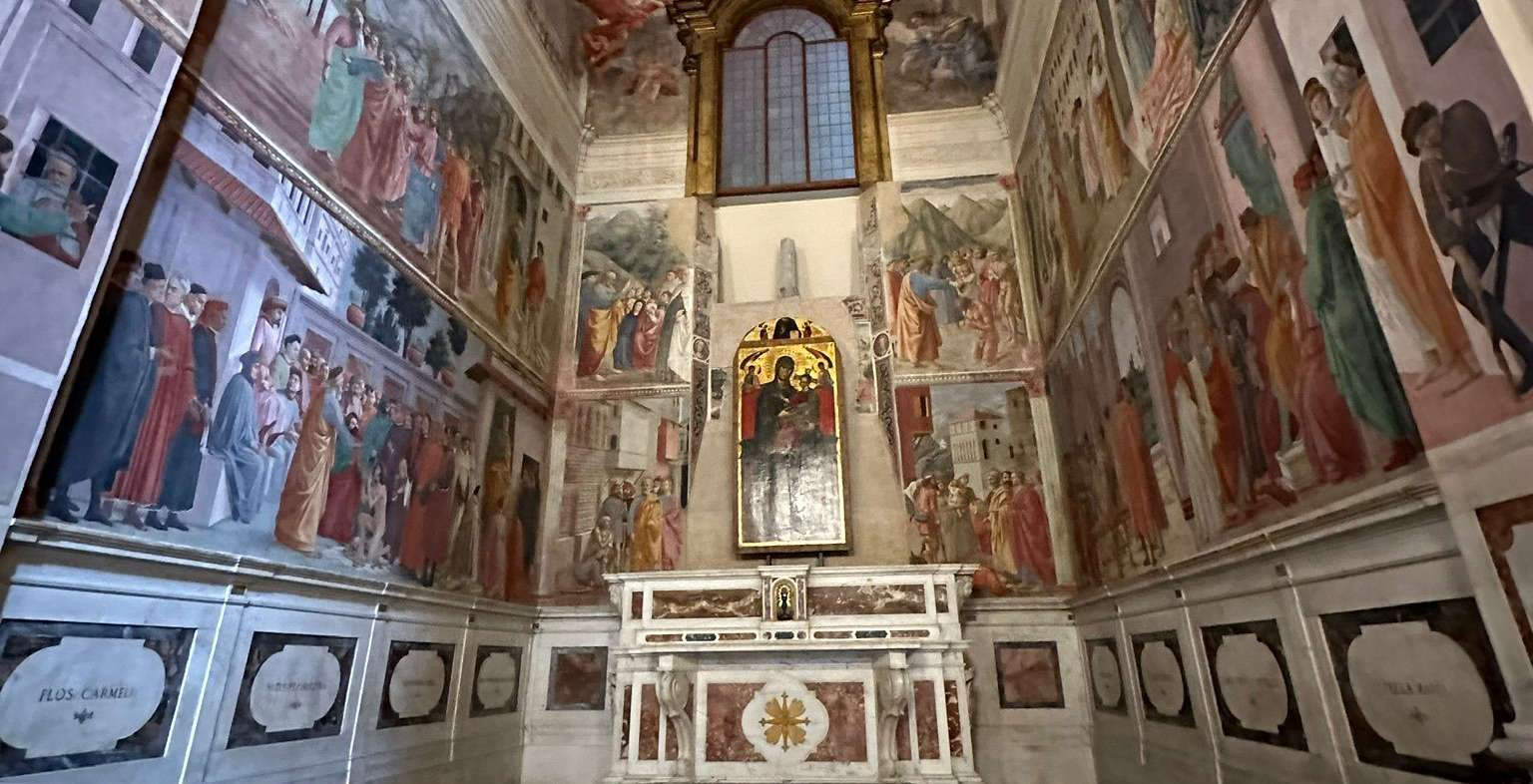 |
| Florence, Brancacci Chapel restoration finished |
Warning: the translation into English of the original Italian article was created using automatic tools. We undertake to review all articles, but we do not guarantee the total absence of inaccuracies in the translation due to the program. You can find the original by clicking on the ITA button. If you find any mistake,please contact us.